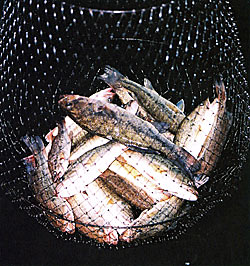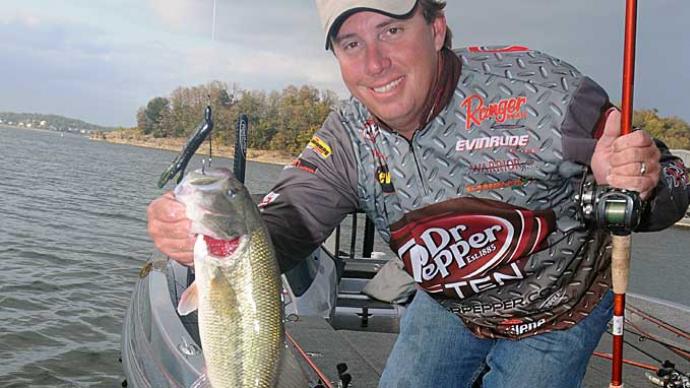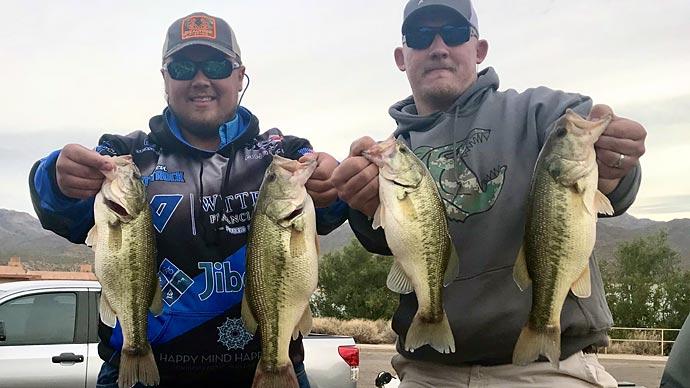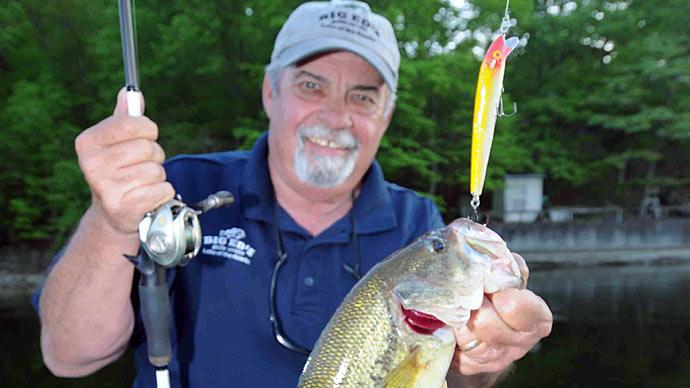
I frequent many fishing pages on the Internet. There is much to be learned from the insights of other anglers, but sometimes their views depress me. I find some anglers don't believe fisheries research reports and fisheries statistics, saying all statistics are manipulated and invalid. They dispute biological data that show bass anglers can catch most of the bass in a pond or lake. These comments show that there is often a basic distrust and misunderstanding of science, statistics, and the scientific method.
Fisheries statistics can be misused, misapplied, or misunderstood, particularly by people who don't bother to check details of collection environments and techniques used. Yet, the scientific method and its related statistical analysis techniques have provided sufficiently accurate measurements and descriptions to put men on the moon. Science has been the springboard to create and apply most artificial materials and tools now used by humankind. Excessive suspicion of data can be as harmful as giving statistics credit when credit isn't due. Thinking humans learn to identify, respect, and apply valid data to the problems they face. This is particularly true in fisheries management.
Fisheries biologists have lots of valid data on catch rates. Catch data covers a long period of time with many, many samples. Statistics should have a large number of samples (N), and encompass all of the variable weather changes, water-level changes and other habitat factors that effect catches. Observations made on one or two, or even thirty, fishing trips by anglers usually won't hack it. Anglers often base opinions on their own inadequate data, merely because they value their limited experience over long term scientifically collected data.
One of the best series of studies of the impact of anglers on a relatively small largemouth bass fishery was made many years ago at Ridge Lake, a 14 acre Coles County, Illinois impoundment by Dr. G. W. Bennett. The studies showed this newly opened un-fished lake, subjected to two weeks of fairly heavy pressure, lost over 70% of available adult bass. Fish populations before and after the opening were measured by draining the lake, so there wasn't much error in the initial and final population estimates. All fish harvested were counted by a creel agent at a single exit point. Similar results have been measured at other newly opened or re-opened ponds, and years ago skilled anglers from the In-Fisherman Magazine staff proved they could completely down-fish a small lake within a few weeks during the spawn.
These were naive, northern bass, inexperienced with angling. Presumably, based on catches from other waters, experienced northern bass and Florida-strain bass are somewhat harder to catch, and decimation of these populations may take longer.
Other studies have shown that, when catch-and-release (C&R) isn't practiced, light fishing pressure harvested between 5% and 15% of the total adult population every year. Moderate pressure harvested 15% to about 35%, while heavy pressure took from 35% to 60% of the total number of available bass over 12-inches.
In a lake with low to average fertility, there may be only 15-25 adult bass per acre. Removal of 3 or 4 adult bass per acre per year is "light" harvest, while removal of 10 or more per year per acre is "heavy" harvest. Even light harvest of the largest bass will reduce the lunker potential of most lake. Your pond manager should estimate productivity per acre and determine if the population is threatened by the existing harvest level.
With C&R practiced by about 50-60% of anglers, harvest rates may drop 5-15% below these figures. Unfortunately, any anglers who continue to harvest are able to take home more fish and cancel-out much of the potential gain. Unless almost 80% of angler practice C&R on heavily fished lakes, it may be necessary to enforce a stiff protective slot or size limit to keep the bass population in a pond large enough to consistently provide good catch-and-release fishing.
Moderate to heavy fishing pressure is sufficient to seriously degrade the quality of bass fishing, particularly the number of larger bass caught by anglers. The superior catches of larger bass associated with limits that reduce harvest of larger fish at both large reservoirs and well-managed ponds clearly demonstrate this. Appropriately applied and obeyed special limits almost always provide better fishing than indiscriminate harvest of bass. Good fishing results when larger bass remain in the water. Heavy harvest pressure can remove almost all large bass within a few years if C&R is not practiced.
It could take a year to read all of the studies of bass populations available in the literature, and two more years for a non-trained biologist to understand why some studies are more valid than others and mean more when generalizations about bass catches are made.
Years ago, the Ridge L. studies I mentioned were badly misread and abused by both biologists and laymen. After draw-downs and populations were counted, the few remaining bass were returned to the lake to spawn and replenish the bass population when the lake was refilled. Some readers, including numerous biologists who should have known better, erroneously concluded it was impossible to over-fish bass populations. This false idea dominated fisheries management for the next twenty years and allowed many potentially productive bass fisheries to be fished into mediocrity.
During the Ridge Lake draw-downs, most of the smaller bluegills were culled and not returned to the lake. The result was almost all of the few remaining adult bass spawned successfully, there was little competition for food, and almost no predation on juvenile bass. A disproportionate and highly abnormal number of bass survived to replenish the fishery. In real ponds with no draw-downs and culling, abundant small bluegills would have decimated nests of the few remaining adult bass, competed with the few surviving bass fry for plankton and insect food, and eaten many more fry. Without draw-down and culling, the Ridge Lake bass fishery would have been ruined by the excessive harvest.
You've got to know how to read analytically and be a good critic to apply scientific research properly, and even trained scientists make mistakes. But, scientifically obtained catch data can provide meaningful insights if properly analyzed and the advice of a good pond manager is usually far better than the wild guesses of anglers about what is happening below a pond's surface.
Reprinted with permission from Pond Boss Magazine



